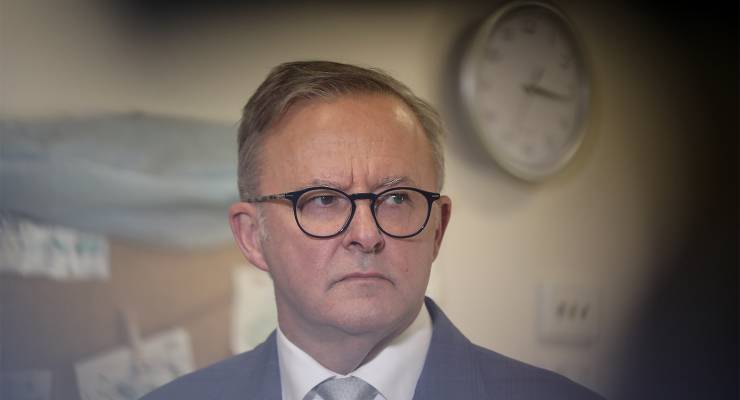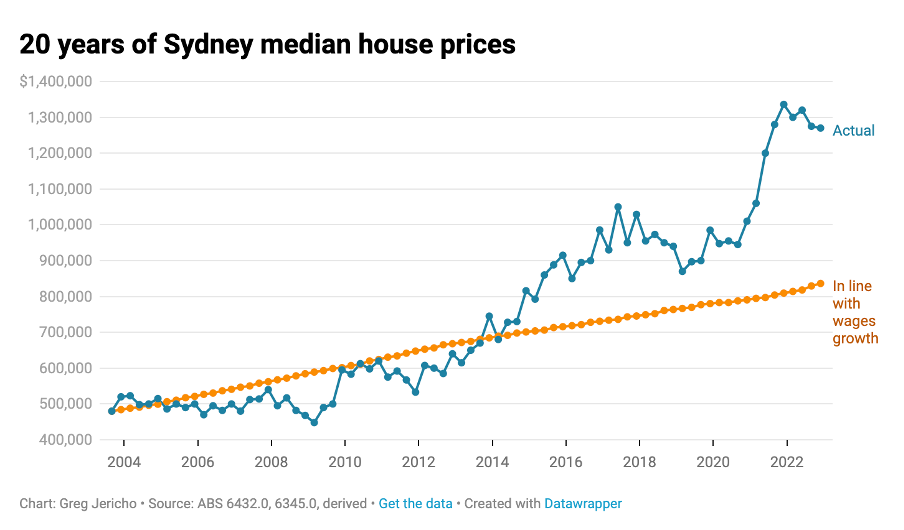
I once booked the late, great Australian housing economist Judith Yates for a speaking engagement. After a fascinating discussion ranging across her four decades of research in Australian housing, I cut to the chase: will houses ever become affordable again? After all, they can’t get more expensive forever, right?
Yates shook her head. Rather sadly, she explained that house price inflation was so baked into Australian policy settings that it was difficult to see how housing could quickly become more affordable. She dismissed any chance of a US-style housing crash: she thought that it had become almost an article of faith among policymakers that property prices had to be supported. Yates felt very sorry for younger generations, she told me. Things were likely to get worse, not better.
That was years ago, well before the pandemic. Things have indeed worsened for younger Australians — and anyone else who isn’t lucky enough to possess their own dwelling.
Rental vacancies are at their lowest level in years, well below the 2019 rates leading into the COVID pandemic. Recent data shows inner-city landlords pushing for rent hikes of 30%, and suburban vacancies falling to a rock-bottom 0.4%. The ABC carried a story this week of evicted tenants in Tasmania using the extra weeks required by landlords seeking magistrate’s orders as their final preparation for homelessness.
Things aren’t much better for those trying to buy. First-home buyers enjoyed a temporary boost during the pandemic, but recent falls in dwelling prices have been more than offset by savage hikes in interest rates. The longer-run picture is discouraging: dwelling prices have outpaced real wages for decades now. Homebuyers struggling with rising living costs will also find it harder to save for a deposit.

The policy settings almost all point in one direction: homeowners and landlords get extensive subsidies; renters get little. It’s not just negative gearing and capital gains tax — land taxes are also arguably much lower than they should be.
Australia’s social security system is strongly tilted towards homeowners. Despite the May budget increase, Commonwealth rent assistance is still an afterthought, compared to the billions showered on property investors. Migration is running hot, with hundreds of thousands of international students returning to Australian universities in recent months, and net migration expected to increase in coming years as well.
Supply is also a problem. Australia is not building enough dwellings, especially affordable dwellings. The National Housing Finance and Investment Corporation (NHFIC) recently modelled the national housing market. Its conclusions were bleak. The NHFIC forecasts a collapse in housing supply in coming years, graphically illustrated by the string of recent home-builder insolvencies. The report says that “slowing supply, together with increasing household formation, is expected to lead to a supply household formation balance of around -106,300 dwellings (cumulative) over the five years to 2027”.
This supply crunch is coming despite house prices seemingly bottoming, and rental demand is strong. Rising input costs are a big factor: lumber, steel and other construction material prices are way up since the pandemic. Interest rates obviously aren’t helping either: nasty spikes in mortgages in recent years have priced out first-home owners, and crimped the ability of developers to finance houses and apartments.


In summary, our housing crisis is getting worse, and quickly.
When confronted with this pressing issue, the Albanese government has done relatively little. Treasurer Jim Chalmers increased rent assistance in the May budget, and there was a brief line item about encouraging “build to rent” housing investors. The government has inked a Housing Accord, with the “ambition” of building “1 million new well-located homes over five years from 2024”. Housing Minister Julie Collins has also reestablished the National Housing Supply Council, helmed by Mirvac boss Susan Lloyd-Hurwitz.
Most prominently, Labor has proposed a $10 billion housing investment fund that it claims will leverage around $500 million a year in social and affordable housing construction, building around 30,000 new dwellings in its first five years.
As Guy Rundle points out today, there are significant questions about the structure of the housing fund’s model. But even if it succeeds on its own terms, a $500 million annual investment in housing will barely touch the sides of Australia’s giant housing market. According to the ABS, there are nearly 11 million dwellings in Australia, worth a whopping $9.6 trillion at the end of 2022. Judged against these figures, Labor’s fund looks like a worthy but small reform at best, or cynical window-dressing at worst.
Judith Yates died last year; NHFIC’s pessimistic report on housing supply this year is dedicated to her memory. A kind and charismatic woman, Yates is much missed by her colleagues. Her wise and egalitarian perspective on Australia’s housing woes is needed more than ever. As Yates pointed out in her work, Australia’s housing crisis took generations to develop. It will not be unwound quickly.
But there are a number of policy levers available that aren’t being used.
Most prominently, housing prices are not regulated. In Australia’s highly privatised housing market, vendors compete at auction to charge the highest possible price for selling a property. Landlords are free to charge the highest rent the market will bear.
Rent caps are anathema to many economists, and of course to landlords. But should they be? Our governments regulate energy prices, minimum wages, even university fees. Given current market failures, refusing to cap rents amounts to a free kick to landlords to make windfall gains.
Governments are also failing to build. Genuinely addressing housing supply requires a massive national effort of affordable home building, analogous to the huge public investments made after World War II. State governments are particularly culpable, in recent times selling off more public housing than they’ve managed to build. Capacity constraints also need to be addressed: we need to shore up our shaky construction supply chains, train more workers and tradespeople, and consider bailing out or even nationalising failing home builders like Porter Davis.
More fundamentally, Australia needs to start planning again. The vast bulk of our population lives in five capital cities. This is a quirk of history, not a rational plan for our population. Successive national and state governments have comprehensively failed to invest in regional cities and transport links on anything like the scale required.
Most of all, we need to get real about the solution to the housing conundrum: hurting rich people. If we really want housing to be more affordable, then dwelling prices and rents will have to fall, or at worst grow more slowly than wages.
Not many in our political class truly want that. After all, most of them are landlords.
Is Labor doing enough to address the housing crisis? Let us know by writing to letters@crikey.com.au. Please include your full name to be considered for publication. We reserve the right to edit for length and clarity.








It’s taken me 2.5 years to leave my abusive marriage and finally keep my children safe thanks to the housing crisis. The wealthy have absolutely no idea how tough it is out there, particularly for women escaping DV.
I doubt they want to have any idea. Best of luck
Hurting the rich! Oh, what sweet words, like manna from heaven, like forbidden fruit.
MORE PLEASE, Crikey
I am a landlord (1 property) and benefit from NG and CG discount and still think it’s wrong.
I voted for them to be wound back in the last election but one when labor lost – but I couldn’t find anyone else that did.
Reducing house prices (relative to wages) is right for the country but political suicide unfortunately.
True. I’m reminded of Upton Sinclair’s comment from 1934, “It is difficult to get a man to understand something, when his salary depends upon his not understanding it.”
But should one man’s salary mean it kills off another’s chance at having an affordable home?
There’s a fine example of the sort of thinking that’s so hard to understand when you’re a landlord.
And the political class will – by definition – be the ones whose vote is needed to effect change. Meaningful change.
One thing that’s being missed: it’s not like all these international students and migrants coming back are magically going to land cheap, quality rentals while locals struggle to find anything at all. New arrivals will have just as much trouble, probably a lot more, finding somewhere to live. News of the horrific state of Australia’s housing market will doubtlessly flow back overseas and people will think twice and cancel their plans before coming to Australia. Will governments then finally be forced to act, when universities experience a dramatic shortfall in international enrolments and business does not get the cheap imported labour it was counting on? Time will tell, I guess. This isn’t an issue on the sidelines, this will affect the country in so many different ways. Of course homeowners will continue to demand the value of their housing and tax concessions must forever increase regardless of any other considerations, and there will be wailing and gnashing of teeth when the end comes, but one day governments will have to bite the bullet or Australia will sink.
Good comment. The drive to allow short-term profits for the wealthy will have its repercussions, not just for our overseas reputation but for our own political culture. We are one of the world’s most politically apathetic countries, but there’s a point where the homeless will become so numerous that a local version of the MAGA forces will begin to form, driven not by sense, or by rationality, but by sheer anger and a desire to hit back.
Correct. When you have nothing to lose, other options look viable. Such as crime, for example. Watch people who have never been in contact with the criminal justice system start turning up in courts from now on. Jail is likely better than living on the streets.
You are correct. I worked in homelessness for many years before the shit hit the fan in 2020. Jail is an option. It’s what you do to land in jail that will change.
Here’s hoping we go a bit more 99% than MAGA.
You would think so. But it is likely that an overcrowded house in Australia is considerably better than what they had in their own country. I hold little hope of that dynamic playing out.
The students who come here from India and China are usually from small middle class families, probably used to a pleasant flat in a city. There are poor people in those countries, but they can’t afford to study overseas.
Exactly, you need to show offshore funds & income streams for a student visa…. the majority neither stay nor have access to easy or automatic permanent residency; what kept many Indians away for a while was the violence during the late noughties, many chose Canada & EU vs. Oz, US & UK.
Exactly.
I think you’ll find of late there’s a lot of “students” rather than students.
Would not be hard to fix this, but the whole point is to create a pool of low-wage, low-skill workers, so from a policy perspective it’s not broken.
If a student can afford to put up the money to come here and study, I doubt they come from a background of poverty and destitution. I lived in China for a while teaching the IELTS exam to high school students hoping to study here and pretty much all of them came from upper-middle class families with nice three or four bedroom apartments. This article is an indication of what could be on the horizon: https://www.abc.net.au/news/2023-05-19/international-students-migrant-housing-crisis-living-costs/102355508
True and the student should have on campus accommodation provided given that most of them go to unis where the VC get over a million bucks a year. THe Group of 8 universities are becoming parasites rather than benefits.
Who will enforce this and how? There is already much custom student and backpacker accommodation, but related was Covid border shut down, hence, much accommodation did too….
Yeah nah, cyclical and much data/seasonal ‘noise’ post Covid border closure, NOM playing catch up, that will settle in medium term as it always does.
Profile of many caught in the NOM is not explained nor are their housing preferences e.g. homestays, on campus, purpose built &/or residential apartments in CBDs, sharing etc.
It’s not the first and won’t be the last time when (undefined) housing (type) has been highlighted and linked to (undefined) ‘high immigration’ via media using suboptimal FIRE agitprop masquerading as valid data, relying upon anecdotes and replicating same talking points as UK media (as we speak), to justify immigration restrictions?
The elephant in the room ignored by all, but well presented by Gapminder’s late Prof. Hans Rosling, is our permanent population (ex NOM medium term temporary churnover) population dynamics including below replacement fertility and ageing. The oldies are the fastest growing cohort in the permanent population, especially now with baby boomers transitioning to retirement; suggesting smaller households vs. families?
While we stay in the data longer, many stay in their homes longer too inc. empty nesters, i.e. less churnover of family properties, yet we are still left guessing by FIRE media due to lack of granular or grass roots data to inform vs. PR propping up steady slow stagnation of prices (since 2009).
Although RW &/or FIRE media, LNP etc. may want us to, I wouldn’t lose much sleep about it…..
“Stagnated” LOL.
https://www.abs.gov.au/statistics/economy/price-indexes-and-inflation/residential-property-price-indexes-eight-capital-cities/latest-release
And property was already wildly expensive in 2011 when that data starts, have increased a similar proportion in the previous ten years.
What?
I am really struggling to understand what you are saying Drew
Oz media is dumbed down, presents issues simplistically, esp. immigration, housing & employment, for dumbed down solutions, ignoring the complexity of issues of the day to satisfy the dumbed down needs of many Australians?
You could simply ask a specific question rather than complaining of something or shooting messengers? 🙂
Paraphrasing, the magic of the free market will solve everything, and anyone questioning whether infinite growth forever and always may carry consequences is racist.
Hans Rowling, great reference, essential and accessible viewing for all those people obsessing over world population.
Fascinating, in the noughties while the Anglosphere started stressing about confected issues of immigration and/or population growth (to deflect from fossil fuels & carbon pricing), Rosling’s GapMinder ‘Don’t Panic’ explained the dynamics ignored by media in their rush for headlines ie. much population growth is simply previous generations high fertility rattling through; neither infinite nor exponential.
Rosling did not even challenge the UNPD end of century forecast 10+ billion (now staggering around 8 billion), but starting a decade ago a conga line of global demographers (unknown to Australian media & experts) started challenging UNPD forecasts, why? They saw, via local demographers in India, China, Kenya etc. falling fertility rates that simply didn’t support the UNPD’s odd forecasts (down then up again?) on future fertility for Malthusian high numbers (indirectly supporting the ‘great replacement’ conspiracy).
The latter has been explained well by Bricker & Ibbitson’s research, via their book ‘Empty Planet’, predict peak mid century then precipitous decline, while they suggest that both UNPD and the ‘Population Bomb’ as being ‘conservative’; Bricker recently highlighted how between ’18 and ’22 UNPD end of century forecast lost over half billion+, and as always, revised downwards….
They have a good interview with Steve Paikin on Canadian tv titled ‘The World’s Shrinking Population’, easy to find, where they explain the above.
Every problem facing the world would be easier to solve with fewer people.
That’s not “obsessing”, it’s maths.
Median headline prices in Australia, driven by urban areas or capitals, have not kept up according to the 7% rule; property or asset price needs to double every decade to cover CPI & costs, just to tread water…. basic financial analysis.
7% rule ? You seem to be talking about rentseeker wet dreams as “rules” and “basic financial analysis”.
The RBA targets inflation at ~2-3%pa.
Housing is a consumption good, not a productive asset, it does not innovate or create value. In a sensible and competitive property market (which Australia most definitely does not have), overall average house prices should grow no faster than inflation. Housing growing at double the rate of inflation is a catastrophe that impoverishes the majority – and particularly the young – to enrich the few and the old.